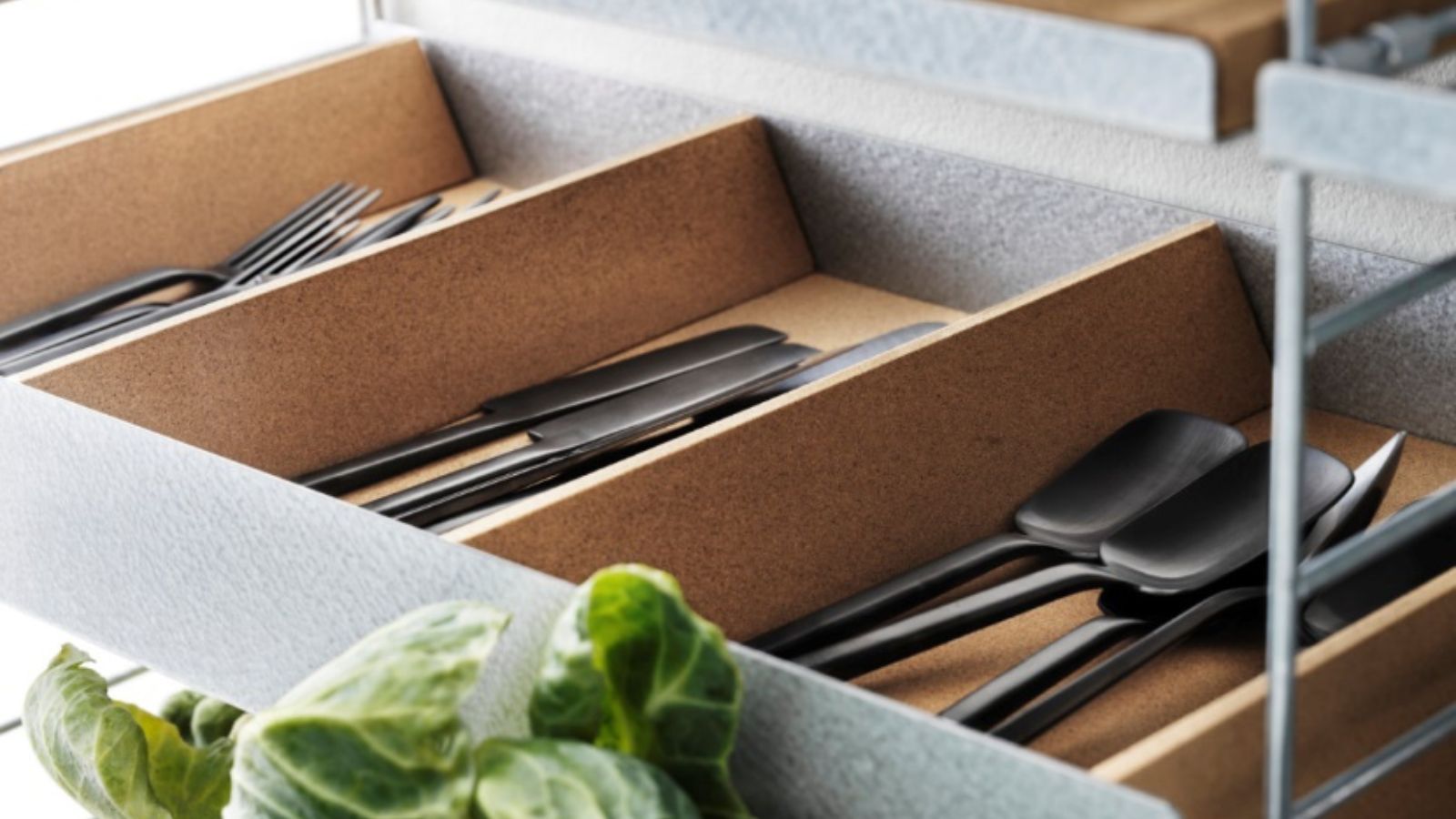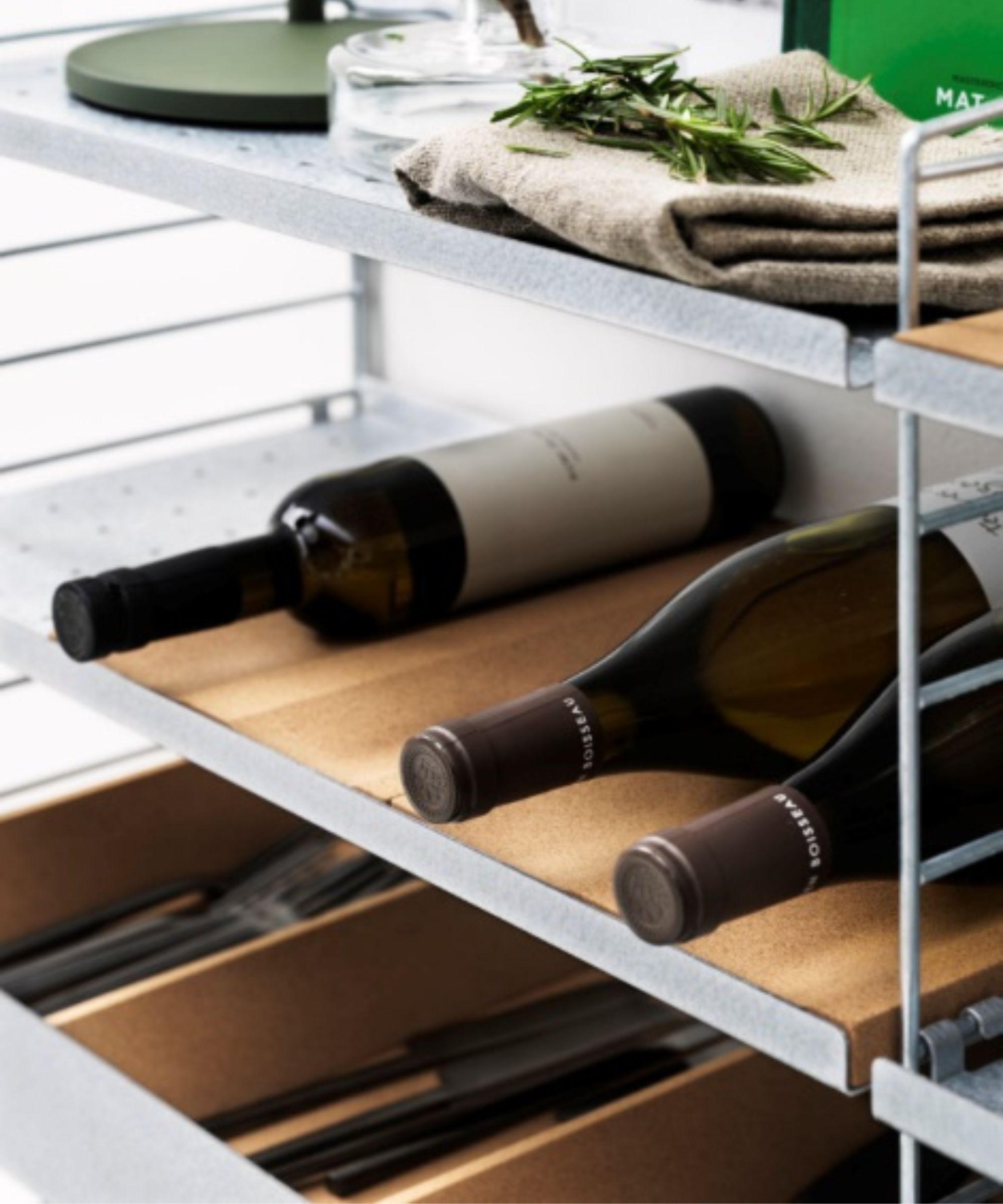
Cork, with its biophilic and eco-friendly appeal, is fast becoming a popular choice for everything from organizers to flooring around the home. However, its unique texture while bringing resilience, means it can be tricky to keep clean through daily use.
Luckily, cleaning off old cork is relatively simple, and you can even use items you already have at home for quick and easy maintenance.
Here, professional cleaners have shared their five best cleaning tips for cork to help you avoid damaging this sustainable material.
How to clean cork
‘Cork is a clever and versatile material that’s coming back in style as a part of the “biophilia” trend, where we seek to connect with nature, organic materials, and plant life, in our homes,’ begins Bo Hellberg, CMO at String Furniture. ‘It is inherently sustainable and brings warmth and texture to any surface or space, but it’s also ideal for insulating, which makes it great for kitchens.’
It is, therefore, important to maintain it correctly to keep it sustainable. This is how the experts go about it.

1. Scrub with soapy water
For general day-to-day maintenance, cork is very simple to clean, often only requiring a gentle buff with warm, soapy water, says Vanessa Terra Bossart, cleaning professional and founder of Green Terra Cleaning. ‘This solution effectively removes grease and stains without harming the cork,’ she explains.
‘I recommend using something like Dr. Bronner's Pure-Castile Liquid Soap diluted in water. It's gentle yet effective for cleaning cork without causing damage.’
2. Disinfect regularly
If your cork is in a high touch zone, such as an organizer, or a liner for a drawer, then you can disinfect it by cleaning it with hydrogen peroxide, adds Ken Doty, cleaning expert and COO at The Maids. Simply buff the surface with a clean cloth dampened with either hydrogen peroxide, available at Walmart, or rubbing alcohol after cleaning with soap, and allow it to dry completely.
‘Adding a cork sealant, such as Kelly’s Waterproof Cork Sealer from Amazon, can help to protect the cork and make cleaning and disinfection easier in the future,’ Ken continues.
3. Use a degreaser for hard-set stains
Dealing with stains on cork can be more difficult, but there are a few approaches you can take. For a gentle approach to cleaning kitchen grease or watermarks, Lina Da Silva, professional cleaner and founder of Toronto Shine Cleaning suggests applying a degreaser, such as Formula 409, from Amazon or Fantastik, at Walmart, to stains and letting it sit for a few minutes before wiping it away with a damp cloth. This should be enough to remove light staining, especially on sealed cork.
4. Sand away stains
‘If this is not effective, stains and grease can be removed by light-grit sandpaper,’ continues Ken Doty, cleaning expert. ‘Be very gentle, and only sand in one direction. Don't move the paper in circles or you risk removing layers of the cork altogether.’
Finish by wiping away any dust or debris and cleaning and drying as usual. Consider adding a sealant to protect the cork in the future.
5. Dry thoroughly to avoid mold
Leaving your cork damp or wet is a bad habit that will increase the risk of mold in your home, warns Lina Da Silva, professional cleaner. To prevent mold, she recommends leaving it to dry out in a well-ventilated area, by a window or heater, before putting it away. ‘Using a dehumidifier can help too, especially for larger pieces or floors,’ she adds.
FAQs
Can you clean cork with vinegar?
If you need to remove stains, mold, or sticky build-up from cork, cleaning with vinegar is a great solution. Use a damp (not wet) cloth or a toothbrush dipped in vinegar and water and gently rub the area to remove the marks. Afterward, dry completely to prevent further staining or mold growth.
As with many household cleaning tasks, cleaning cork is made a lot easier if you prevent mess, mold, and stains rather than let them build up to deal with later, reminds cleaning expert Ken Doty. ‘You can protect against future stains and damage by eliminating mess as soon as it occurs. Letting liquids soak into your cork will only make the damage harder to get out,’ he warns. Cleaning regularly and adding (and regularly reapplying) sealant will save you a lot of time and energy in the long run.







